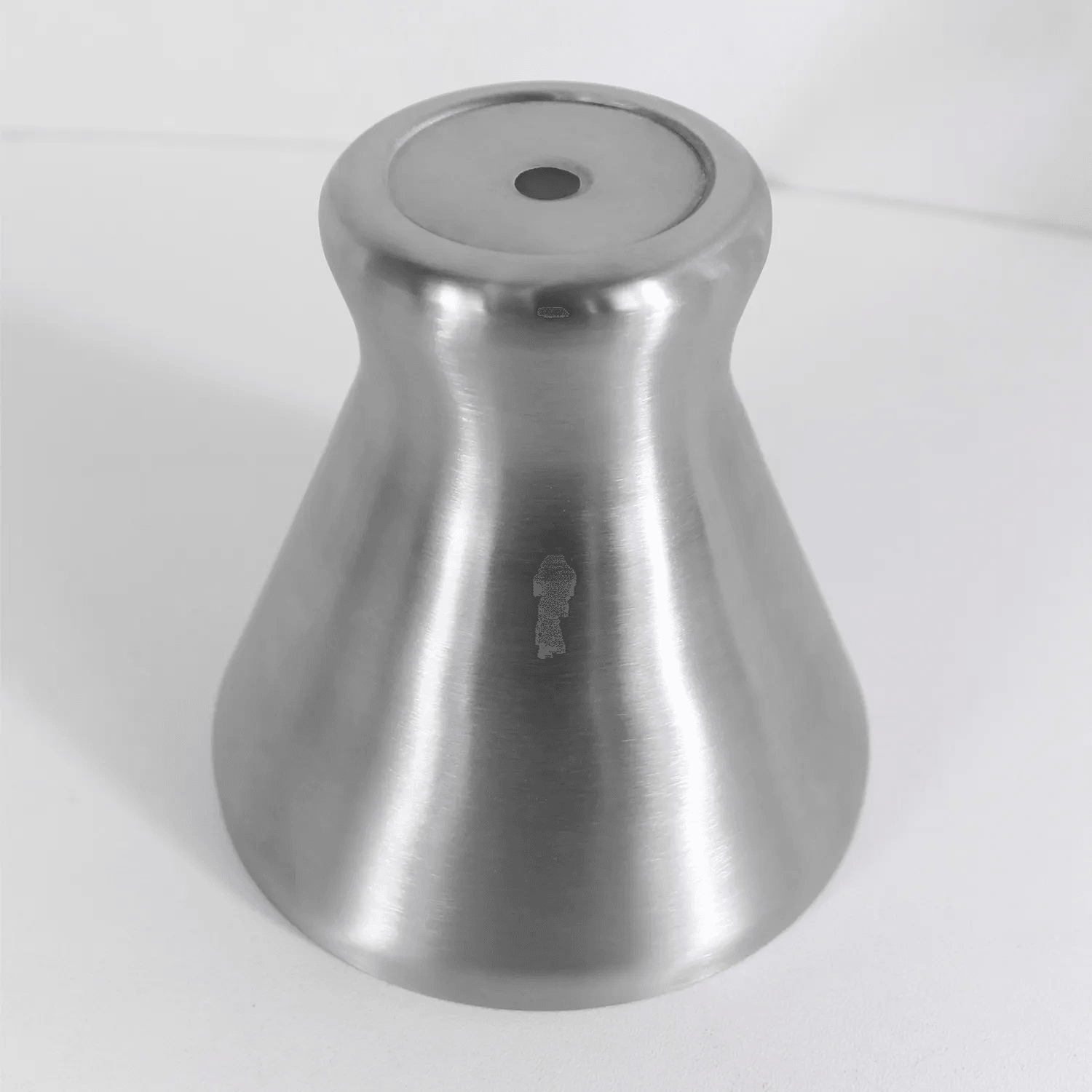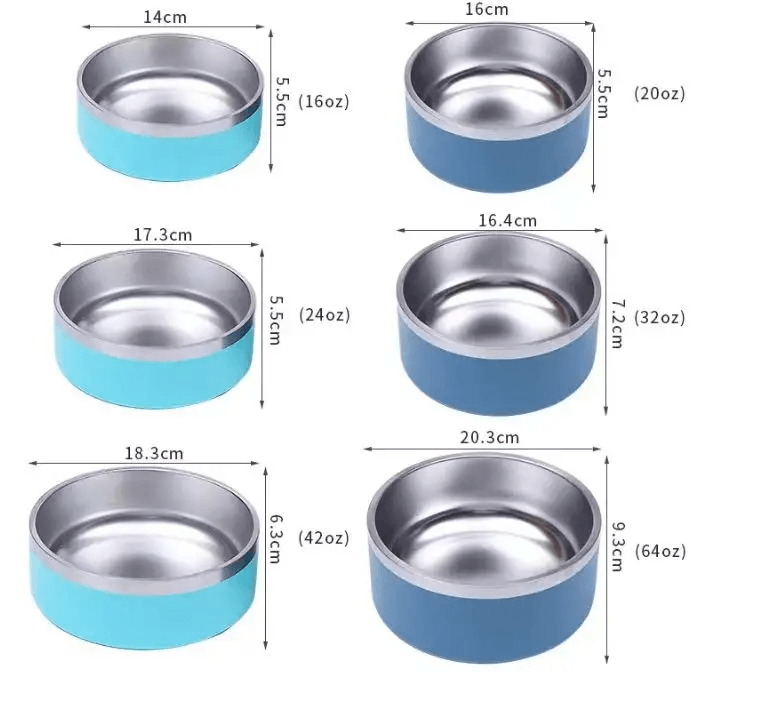Introduction

Are you curious about food grade stainless steel? In this comprehensive guide, we'll explore what makes stainless steel food grade, including a comparison of 304 and 316 stainless steel. We'll also delve into the unique properties that make food grade stainless steel a top choice in the food industry.
What is Food Grade Stainless Steel?
Food grade stainless steel refers to steel that meets specific FDA standards for use in food processing and handling. It must be non-toxic, corrosion-resistant, and easy to clean, making it ideal for contact with food.
Is 304 or 316 stainless steel food grade?
Both 304 and 316 stainless steels are considered food grade due to their corrosion resistance and non-reactivity with acidic foods. However, 316 stainless steel offers superior resistance to pitting and crevice corrosion in chloride environments.
What is special about food grade stainless steel?
What sets food grade stainless steel apart is its ability to withstand harsh cleaning chemicals, high temperatures, and acidic foods without leaching harmful substances into the food. This makes it a safe and reliable choice for the food industry.
Understanding Food Grade Stainless Steel

Composition and properties
Food grade stainless steel is typically made of iron, chromium, and nickel, with additional elements such as molybdenum or manganese for enhanced properties. This alloy offers excellent corrosion resistance, high strength, and durability, making it ideal for food processing equipment and utensils.
Food grade stainless steel is also known for its non-reactive nature, meaning it does not impart any flavors or odors to the food being processed. This makes it an excellent choice for maintaining the integrity and purity of the food products. Additionally, its smooth, non-porous surface is easy to clean and resistant to bacterial growth, ensuring a hygienic environment for food preparation. These properties make food grade stainless steel a top choice for commercial kitchens and food processing facilities.
FDA standards and regulations
The FDA (Food and Drug Administration) has strict guidelines for materials that come into contact with food. Food grade stainless steel must meet specific criteria for composition, surface finish, and performance to ensure it does not contaminate food or affect its taste or quality.
Food grade stainless steel is commonly used in the food industry for a variety of applications, including food processing equipment, storage tanks, and transportation containers. Its resistance to corrosion, durability, and ease of cleaning make it an ideal choice for maintaining food safety and quality. In addition to meeting FDA standards, food grade stainless steel is also required to adhere to industry-specific regulations and certifications to ensure it meets the highest standards for food contact materials.
Applications in the food industry
Food grade stainless steel is widely used in commercial kitchens, breweries, dairy processing plants, and pharmaceutical facilities due to its hygienic properties. It is used to manufacture storage tanks, piping systems, mixing equipment, and other machinery that comes into direct contact with food or beverages.
Food grade stainless steel is also commonly used in the production of food processing equipment such as ovens, grills, and refrigeration units. Its durability and resistance to corrosion make it an ideal material for these applications, ensuring that the equipment remains safe and hygienic for food preparation. Additionally, its smooth surface makes it easy to clean, further enhancing its suitability for use in the food industry.
Now that we've delved into the composition and regulations surrounding food grade stainless steel alloys let's explore specific types such as 304 and 316 in the next section.
Exploring 304 Stainless Steel

304 stainless steel is a popular choice for food and beverage applications due to its excellent corrosion resistance, durability, and ease of cleaning. Its non-reactive nature makes it ideal for storing acidic foods and liquids without imparting any metallic taste or odor. Additionally, its high temperature resistance makes it suitable for use in kitchen equipment and appliances.
Characteristics and benefits
One of the key characteristics of 304 stainless steel is its high corrosion resistance, making it perfect for use in food processing and storage equipment. It also boasts excellent formability and weldability, allowing for easy fabrication into various shapes and sizes. Furthermore, its low carbon content minimizes carbide precipitation during welding to maintain corrosion resistance.
Common uses in food and beverage industry
304 stainless steel is widely used in the food and beverage industry for a variety of applications such as food processing equipment, commercial kitchens, brewing tanks, storage containers, and utensils. Its hygienic properties make it an essential material for maintaining the integrity of food products while ensuring safety and quality.
A comparison with other grades
Compared to other grades like 316 stainless steel, 304 offers similar corrosion resistance at a lower cost, making it a more economical choice for many food-related applications. While 316 contains molybdenum for enhanced corrosion resistance in harsh environments, 304 remains the go-to option for most standard food processing needs.
Remember that when choosing the right stainless steel grade for your food industry needs, factors such as corrosion resistance, cost-effectiveness, formability, and weldability should be carefully considered to ensure optimal performance and compliance with FDA standards.
Demystifying 18/8 Stainless Steel

Chemical composition and properties
18/8 stainless steel, also known as 304 stainless steel, is composed of 18% chromium and 8% nickel, which makes it highly resistant to corrosion and oxidation. It also contains small amounts of carbon and manganese to enhance its strength and durability. These properties make it an ideal choice for food-related applications where hygiene and durability are crucial.
Advantages and limitations
One of the main advantages of 18/8 stainless steel is its excellent corrosion resistance, making it suitable for use in food processing equipment, kitchen appliances, and utensils. However, it has limitations in terms of its resistance to certain acids and chlorides, so it may not be suitable for all food industry applications. Careful consideration should be given to the specific environment in which it will be used.
Best practices for use in food-related applications
When using 18/8 stainless steel in food-related applications, proper cleaning and maintenance are essential to ensure its longevity and performance. It is important to avoid prolonged exposure to corrosive substances or high temperatures that could compromise its integrity. Regular inspection and maintenance can help identify any signs of wear or damage early on, allowing for timely repairs or replacements.
Decoding 18/10 Stainless Steel

18/10 stainless steel is renowned for its exceptional corrosion resistance, making it a top choice for food processing equipment and utensils. Its high chromium and nickel content provide superior protection against rust and staining, ensuring long-lasting durability in harsh food industry environments.
Superiority in corrosion resistance
18/10 stainless steel contains 18% chromium and 10% nickel, which forms a protective layer on the surface, preventing corrosion and rusting. This makes it highly resistant to acidic foods, moisture, and cleaning chemicals, ensuring hygienic food processing environments.
18/10 stainless steel's superior corrosion resistance makes it the ideal choice for food processing equipment, ensuring a longer lifespan and reduced maintenance costs. The protective layer formed by the high chromium and nickel content also makes it easy to clean and maintain, saving time and effort in busy food processing environments. This means that food processing facilities can rely on 18/10 stainless steel equipment to consistently meet hygiene standards and produce safe, high-quality products.
Ideal applications in food processing
Due to its superior corrosion resistance and hygienic properties, 18/10 stainless steel is widely used in the production of food processing equipment such as mixers, blenders, tanks, and piping systems. Its smooth surface also makes it ideal for food contact surfaces to prevent bacterial growth. In comparison to other food grade stainless steel grades, 18/10 stainless steel offers a higher chromium and nickel content, providing enhanced resistance to corrosion and oxidation. This makes it particularly well-suited for applications where the equipment comes into direct contact with acidic or salty foods, ensuring durability and longevity.
How it compares to other food grade stainless steel grades
Compared to other food grade stainless steel grades like 304 and 316, 18/10 stainless steel offers similar corrosion resistance but with a higher nickel content for added protection. It is also more durable than lower-grade stainless steels like 430, making it a preferred choice for demanding food industry applications.
Now that we've decoded the exceptional qualities of 18/10 stainless steel in terms of corrosion resistance and ideal applications in the food industry, let's move on to comparing this grade with others to understand its superiority further.
Comparing Food Grade Stainless Steel Alloys

When it comes to choosing between 430 and 304 stainless steel for food-related applications, there are several factors to consider. While 304 stainless steel is more commonly used in the food industry due to its higher corrosion resistance and durability, 430 stainless steel is more affordable and still suitable for certain non-demanding environments.
Which is better, 430 or 304 stainless steel?
In terms of overall performance in food-related applications, 304 stainless steel is generally considered better than 430 stainless steel. Its superior corrosion resistance and durability make it the preferred choice for equipment and surfaces that come into direct contact with food.
In addition to its superior corrosion resistance and durability, 304 stainless steel also offers better heat resistance compared to 430 stainless steel. This makes it a more suitable choice for food processing equipment that requires frequent exposure to high temperatures. The ability to withstand heat without compromising its structural integrity further solidifies 304 stainless steel as the preferred option for food-related applications.
Factors to consider in selecting the right grade
When selecting the right grade of stainless steel for food-related applications, factors such as corrosion resistance, ease of cleaning, cost-effectiveness, and specific environmental conditions should be taken into account. It's essential to evaluate the specific requirements of each application to determine which grade is most suitable. For example, in a food processing plant where frequent exposure to acidic substances is common, a grade with high corrosion resistance such as 316 stainless steel would be ideal. On the other hand, in a commercial kitchen with high traffic and stringent cleaning schedules, a grade like 304 stainless steel that is easy to clean and maintain might be more suitable.
Case studies and real-life examples
Real-life examples of successful use of both 430 and 304 stainless steel in the food industry can provide valuable insights into their performance under different conditions. By examining case studies and industry best practices, businesses can make informed decisions when choosing the most appropriate grade for their specific needs.
Conclusion

Food grade stainless steel is essential for ensuring the safety and quality of food products. Whether it's 304 or 316 stainless steel, the right choice depends on specific industry needs. Understanding the FDA standards for food grade stainless steel is crucial in making informed decisions. When comparing 430 and 304 stainless steel, factors such as corrosion resistance and cost should be carefully considered.
The significance of using food grade stainless steel
Using food grade stainless steel is crucial in maintaining the integrity of food products and ensuring consumer safety. It provides a hygienic and durable solution for equipment and surfaces in the food industry, preventing contamination and preserving product quality.
Using food grade stainless steel also helps to maintain the aesthetic appeal of food products, as it resists corrosion and staining, keeping equipment and surfaces looking clean and professional. This can have a positive impact on consumer perception and brand reputation, contributing to overall customer satisfaction. Additionally, the use of food grade stainless steel demonstrates a commitment to quality and safety, which can be a valuable selling point for businesses in the food industry.
Making the right choice for your food industry needs
Selecting the appropriate grade of stainless steel, whether it's 304 or 316, is vital for meeting specific requirements in food processing, storage, and transportation. Understanding the unique properties of each grade helps in making informed decisions that align with industry needs. When choosing between 304 and 316 stainless steel, it's important to consider factors such as corrosion resistance, strength, and cost-effectiveness. While both grades offer excellent corrosion resistance, 316 stainless steel provides superior protection against chlorides and acids, making it ideal for harsher environments such as coastal or industrial settings.
Key considerations for selecting the best stainless steel grade
When choosing between 430 or 304 stainless steel, it's important to consider the specific environmental conditions the material will be exposed to. For example, if the stainless steel will be used in a high-moisture or acidic environment, 304 stainless steel may be a better choice due to its superior corrosion resistance. On the other hand, if cost-effectiveness is a primary concern and the environment is relatively mild, 430 stainless steel could be a suitable option.
